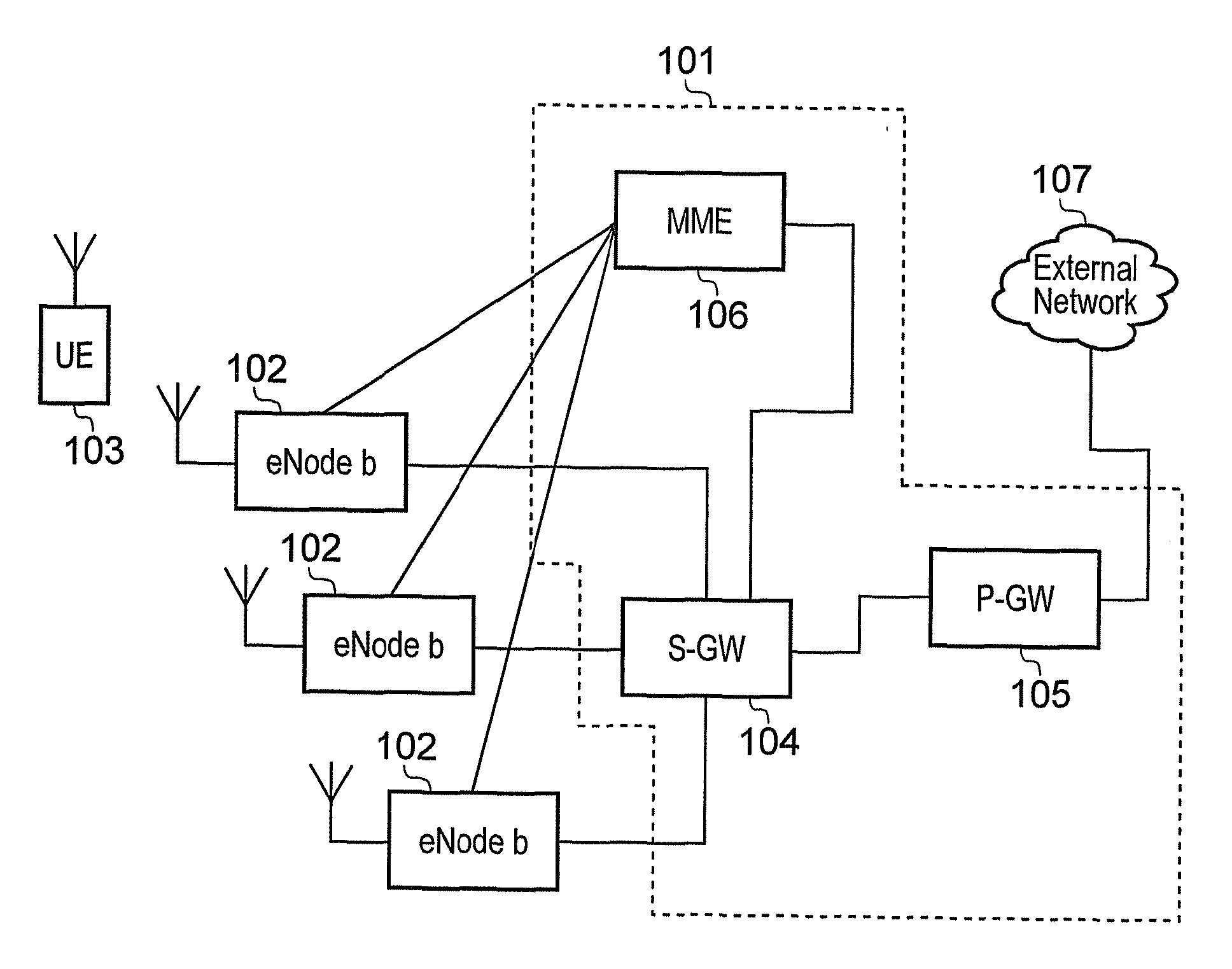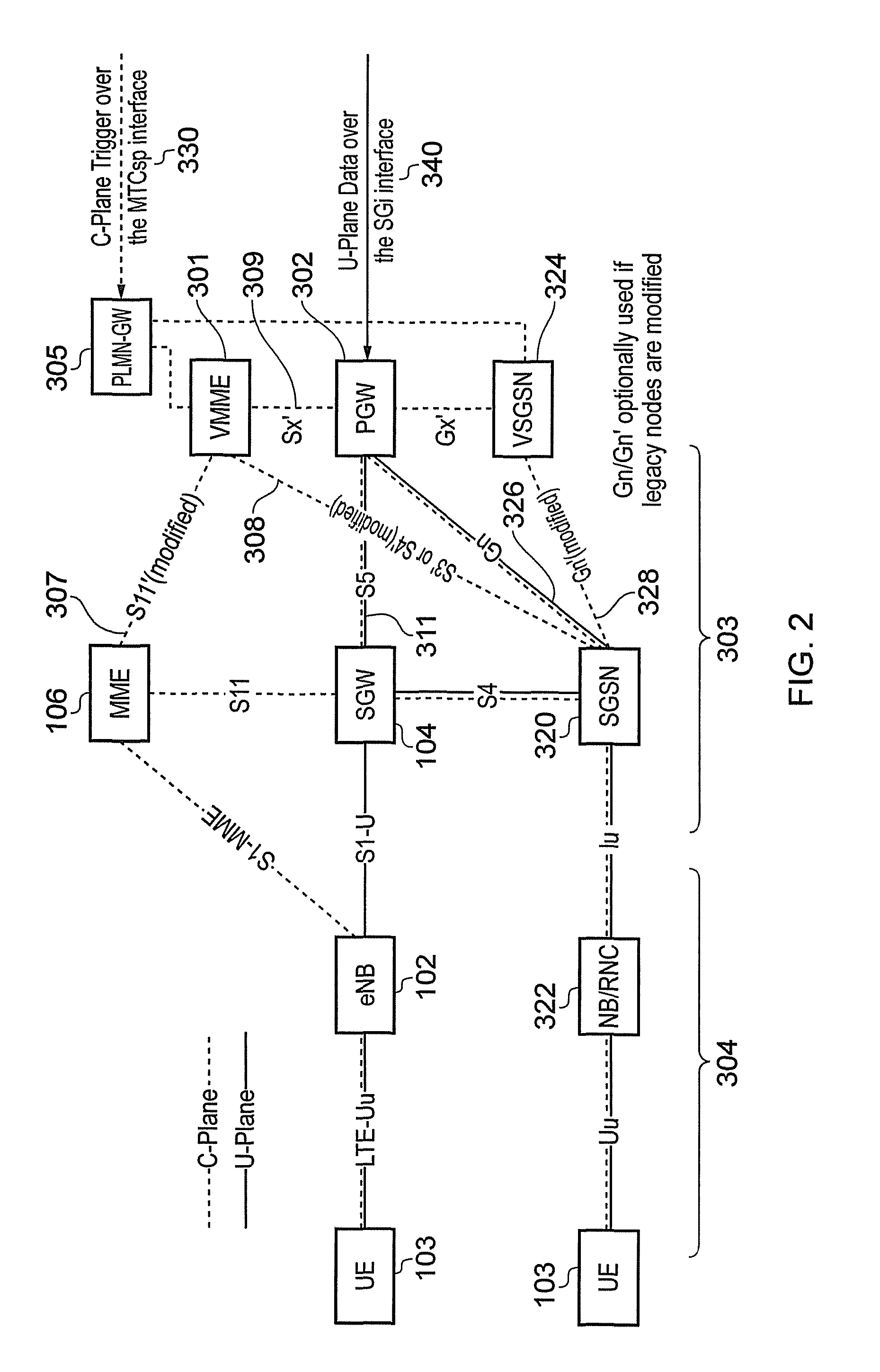System and method for paging off-line state terminals
a state terminal and system technology, applied in the field of communication terminals, can solve the problems of undesirable power consumption, inefficient mtc devices, and certain aspects of lte type systems that are not optimised for the operation of mtc devices, so as to reduce the load on the mobility manager
- Summary
- Abstract
- Description
- Claims
- Application Information
AI Technical Summary
Benefits of technology
Problems solved by technology
Method used
Image
Examples
Embodiment Construction
Conventional LTE Network
[0030]FIG. 1 provides a schematic diagram of a conventional mobile telecommunications network arranged in accordance with the Long Term Evolution (LTE) 3GPP architecture standards. The LTE network includes a core network part 101 connected to a plurality of base stations 102 referred to in the art as an enhanced Node Bs (eNode B). The eNode Bs 102 are arranged to transmit data to and receive data from one or more terminals 103 via a radio interface. The terminals 103 are generally referred to as “communications terminals” which can include devices such as mobile phones, smart phones, data cards and so on.
[0031]The LTE core network 101 includes a serving gateway (S-GW) 104 which is arranged to route data to and from the eNode B 102. The serving gateway 104 is connected to a packet data network gateway (PDN-GW) 105 which routes data into and out of the LTE core network from an external network 107. The LTE core network 101 also includes a mobility management en...
PUM
 Login to View More
Login to View More Abstract
Description
Claims
Application Information
 Login to View More
Login to View More - R&D
- Intellectual Property
- Life Sciences
- Materials
- Tech Scout
- Unparalleled Data Quality
- Higher Quality Content
- 60% Fewer Hallucinations
Browse by: Latest US Patents, China's latest patents, Technical Efficacy Thesaurus, Application Domain, Technology Topic, Popular Technical Reports.
© 2025 PatSnap. All rights reserved.Legal|Privacy policy|Modern Slavery Act Transparency Statement|Sitemap|About US| Contact US: help@patsnap.com



